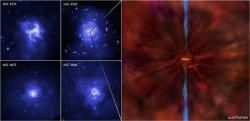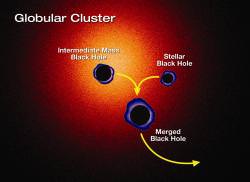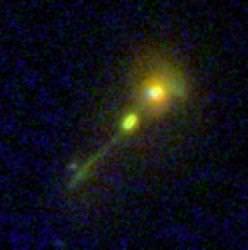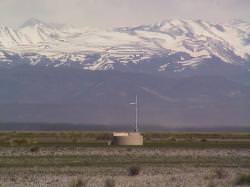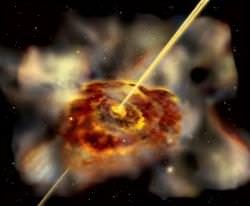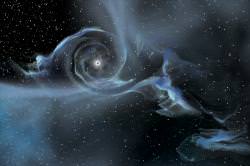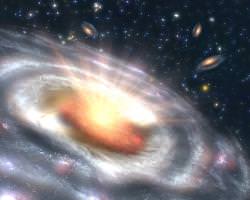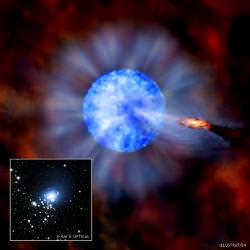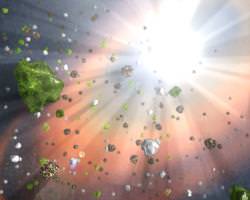The supermassive black holes that lurk at the hearts of the most massive galaxies might be spinning faster than astronomers ever thought. In fact, they might be spinning at the very limits predicted by Einstein’s theory of relativity. Perhaps it’s this extreme rotational speed that generates the energetic jets that blast out of the most massive and active galaxies.
Astronomers used NASA’s Chandra X-Ray Observatory to study 9 giant galaxies that seem to contain rapidly spinning supermassive black holes. These galaxies have large disturbances in their gaseous atmosphere, so the researchers calculated that these black holes must be spinning at near their maximum rates.
“We think these monster black holes are spinning close to the limit set by Einstein’s theory of relatively, which means that they can drag material around them at close to the speed of light,” said Rodrigo Nemmen, a visiting graduate student at Penn State University.
According to Einstein, when a black hole rotates at extreme speeds, it can actually catch up the surrounding space time and make that rotate as well. This effect, linked with the inflowing streams of gas can produce rotating, tightly wound towers of powerful magnetic fields. These fields channel the energy and inflowing gas into powerful jets which blast away from the black hole at nearly the speed of light.
It’s believed that black holes can acquire these extreme rotational speeds when galaxies merge. Fresh material falling onto the black hole just boosts its speed higher and higher until it reaches the hard limits allowed by relativity.
And it’s this extreme rate of spin that forms the power source for the jets. With the number of powerful jets seen pouring out of many galaxies, it might be that most supermassive black holes are spinning at extreme rates; we just haven’t detected them yet.
Supermassive black holes can be very disruptive to their local environments. The jets pump enormous amounts of energy into their surroundings, heating up gas. Since stars can only form when there are large clouds of cold gas, these process of heating can stall star formation in the host galaxy.
Astronomers want to work out the relationship between supermassive black holes and the rates of star formation in the most massive galaxies in the Universe.
Original Source: Chandra News Release

